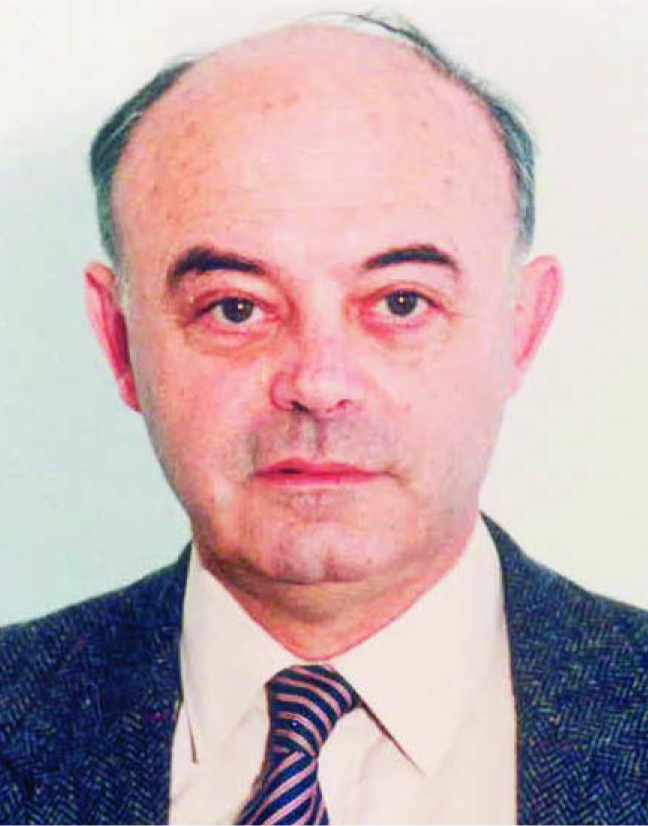Paul Singer
DOI: 10.1063/1.2186292
Paul Singer, an Israeli theoretical particle physicist and an influential and farsighted advocate for the sciences in Israel, passed away on 22 February 2005 in Haifa, Israel, after a brief fight with cancer.
Born on 22 July 1934 in Roman, Romania, Paul immigrated to Israel after graduating from high school. He served in the Israeli army, in which he reached the rank of captain, and concurrently completed his first physics degree in 1956 at the Technion–Israel Institute of Technology in Haifa, Israel. After receiving his MSc in 1958, he obtained his DSc in 1961 in theoretical physics at the Technion under the supervision of Nathan Rosen, who coauthored the famous Einstein-Podolsky-Rosen (EPR) paper.
Paul spent the next two years at Northwestern University, working with Laurie Brown, and the following year at Columbia University, where he joined the group of the young Nobel laureate T. D. Lee. While he was at Northwestern, a light particle, the η meson, was discovered. To explain the high decay rates of the η and K mesons into three pions, Paul and Brown postulated, in a 1964 paper, a light two-pion resonance state, the “Brown–Singer particle,” which was later named σ and then f0(600). That state remains the subject of theoretical and experimental studies.
In 1964 Paul joined the physics department at the Technion as an associate professor; he was promoted to full professor in 1969. One of the first elementary-particle physicists at the Technion, he was instrumental in building up both the particle-theory and experimental groups. From 1990 until his retirement in 2002 he held the Charles Wolfson Chair in Physics.
Paul’s research subjects included muon capture; rare radiative decays of light mesons; and K, D, and B mesons and their corresponding baryons, in the standard model and beyond. His papers with Eduardo Massó and Lars Bergström on the effect of the top quark in kaon decays were quite influential. A unique aspect of those collaborations was the combination of the other authors’ quantum chromodynamics approach for studying nonleptonic weak decays along with Paul’s deep knowledge of the pre-QCD methods. The so-called BMS parameter, named after Bergström, Massó, and Singer, is still used frequently by experimentalists to parameterize the KL Dalitz decay. In recent years, Paul’s long and fruitful collaboration with Svjetlana Fajfer and her group yielded more than 20 papers on various aspects of rare D and B decays.
Paul was always keen on connecting theoretical results with experimental measurements. As soon as a calculation was completed, he was the first to study the feasibility of its measurement. In his most cited paper, written in 1987 with Nilendra Deshpande, one of us (Eilam), Peter Lo, and Josip Trampedić, Paul’s extensive understanding of radiative K decays—knowledge demonstrated in his papers with one of us (Moshe)—led to the use of radiative B decays for predicting the mass of the top quark. Paul was very proud of that prediction when the top was discovered in 1994 at Fermilab.
During Paul’s terms as chairman of the Technion physics department (1969–72 and 1974–76), research there flourished and expanded in condensed matter physics, particle physics, low-temperature physics, and other “hot” subjects. As the Technion’s vice president for academic development (1976–80) and as its senior vice president (1990–94), Paul led the institute to new heights in research and in teaching. He contributed to the successful absorption of many students and scientists from the former Soviet Union and was instrumental in defining and executing a long-range program for the Technion.
His most important and influential positions were the chairmanships of the Israel Science Foundation (1995–2000) and of FIRST (Bikura)—Focal Initiatives in Research in Science and Technology (2002–05). Under his leadership, the ISF turned into the largest provider of funds to basic research in Israel. The ISF budget doubled to more than $50 million per year, which led to an increase in both the number of grants and the funding per grant, and to a significant increase in the quality of research in all disciplines. Novel, innovative, interdisciplinary, and even risky subjects received support from the Bikura Foundation. As deputy chairman of the Israeli Directorate of the European Union’s fourth, fifth, and sixth framework programs for research, technological development, and demonstration (1997–2005), he advanced Israel’s standing in the European Union and thereby increased Israeli scientists’ share of EU support. In 2003 Paul was awarded the Rotary International Prize for Advancement of Higher Education in Israel. Despite all his assignments, his heart was always with physics and he continued to be active in research well after his retirement.
Paul was a person with great integrity, honesty, humor, and wisdom. We sorely miss a true friend, colleague, mentor, and collaborator.

PARD TECHNION

More about the Authors
Gad Eilam. 1 Technion–Israel Institute of Technology, Haifa, US .
Michael Gronau. 1 Technion–Israel Institute of Technology, Haifa, US .
Moshe Moshe. 1 Technion–Israel Institute of Technology, Haifa, US .




